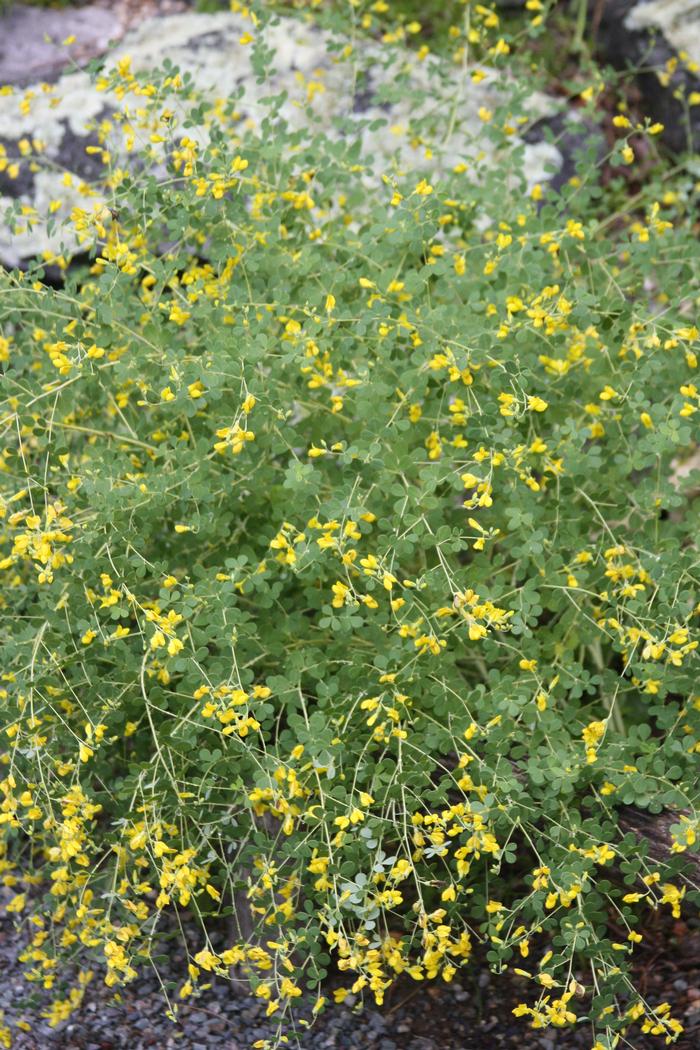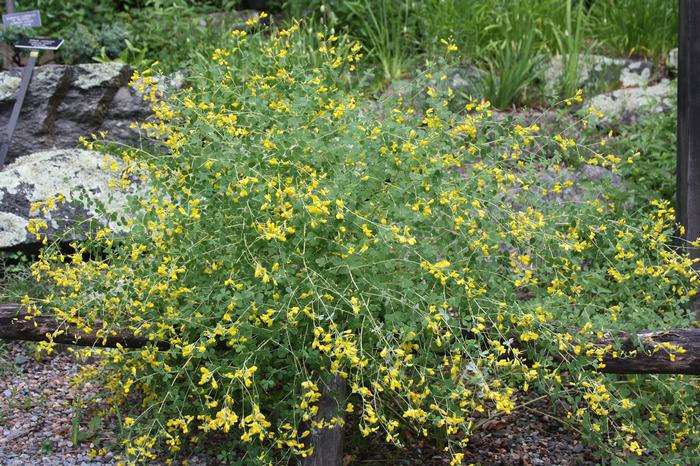General Description
Bloom Description: The small, yellow, pea-shaped flowers, reflective of Baptisia's membership in the family Fabaceae, bloom in late sping and early summer (typically June).
Growth Habit & Shape: Baptisia tinctoria has a round, shrub-like shape and may occasionally spread via rhizomes, though this is seen infrequently in garden settings.
Soil Preferences: Usually found in dry, sandy and barren soils. Tolerates drought and average to poor, well drained soil.
Root Description: Deep, fleshy, somewhat delicate roots make this plant difficult to move once it has established.
Garden Uses: Great for naturalizing in open woodland, and also works well for massing as a meadow or border planting in full or partial shade.
Best Management & Maintenance: Young plants take time to grow significant, deep roots, so plants may seem small through especially during the first season, so patience is a must! Baptisia makes significant gains in size in the second and third year. Do not fertilize, as this legume will form root nodules associated with nitrogen-fixing bacteria.
Common Problems: Plants will fail to thrive in excessively rich, loamy, moist, or ill-draining soils. No significant insect or disease problems.
Benefits
Wildlife Benefits: This is a host plant for various lepidopterans, including the Io moth, Indigo Duskywing, Orange Sulfur, and Frosted Elfin butterflies. Skippers will munch at foliage and various insects and arachnids eat the seeds or use the pods as hiding spots.
Other Practical/Environmental Benefits: Nitrogen fixation (soil enrichment) and deep-rooted soil stabilization.
Use in place of: Japanese barberry, multiflora rose
Ecology
Habitat:
upland and low woods, pocosins, and savannahs, glades, shrub borders, woodland edges, and along stream banks.
Response to Disturbance: This species is adapted to fire-prone landscapes, and is therefore very forgiving of above-ground disturbance, but with deep, large, delicate roots, it does not respond well to ground disturbance. To transplant this species, dig deeply and widely, trying to undercut the roots so as not to break them, and then water well and often during the first season.
Native State Distributions:
Canada: QE
USA: CT, DC, DE, GA, IA, IL, IN, KY, MA, MD, ME, MI, NC, NH, NJ, NY, OH, PA, RI, SC, TN, VA, VT, WI, WV
Wetland indicator status: not classified
References
Return to Top



